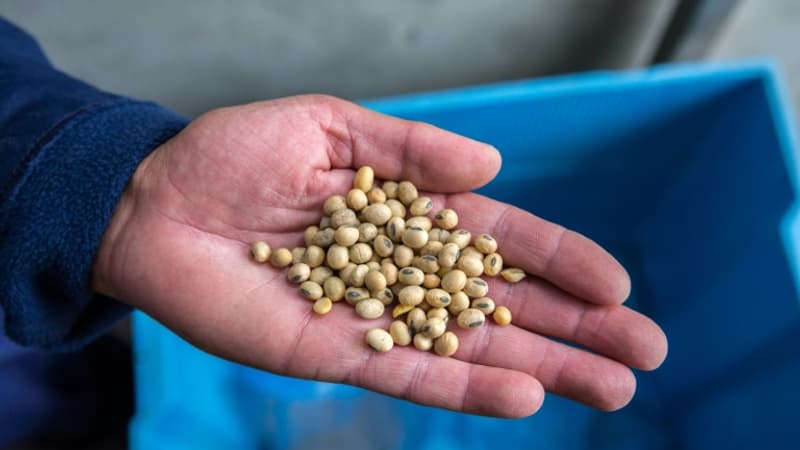An alert and a recommendation for collective catering. Soy -based foods (desserts, yogurts, milk, vegetable fillets, Tofu and, above all, snack cookies, contain too many isoflavones, plant substances close to female hormones with potentially harmful effects for health, alerts ANSE, which recommends not using it in collective restoration.
The Health Agency also invites “Agrifood players to review soy production and processing techniques”, to reduce the isoflavone content of its products, in an opinion published on Monday, March 24, requested by the Ministries of Food and Health.
Isoflavones are phytoestrogens, plant substances near female (estrogen) hormones present in legumes, vegetables and mainly soybeans. “They can interfere with physiological hormonal functioning and, therefore, lead to undesirable effects for the reproductive system,” explains the AFP Aimeric Dopter, head of the Risk Assessment Unit linked to nutrition in ANS.
“Soy is the main source of isoflavones, Anses recommends not serving as soy -based foods in collective restoration to avoid excessive consumption,” from nurseries to schools, universities, secondary schools, business restaurants, EHPAD, hospitals and clinics, therefore, for “all age categories.”
“It is not about throwing soybeans as food, but rather in the isoflavonas content that soy products are currently containing,” said Aymeric Dopter. “While he hopes to have less rich soybeans in isoflavonas, he must raise the foot of the consumption of these products,” he summarizes.
Toxicological thresholds often exceeded
Anses has first defined for the first time, thanks to the available scientific knowledge, toxicological thresholds below which there is almost no health risk (“reference toxicological values”): they are 0.02 mg per kg of body weight and per day for the general population and 0.01 mg/kg for pregnant women and the age of procreation such as prepubes.
He then compared these values with the levels of exposure to the food population and pointed out a “risk of exceeding” for soy -based food consumers. Therefore, these thresholds are exceeded by 76% of boys from 3 to 5 soy foods they consume, 53% of girls from 11 to 17 years old, 47% of men aged 18 and women aged 18 to 50.
Consequently, the agency advises “diversifying foods of plant origin, knowing that the pulses other than soybeans are much less rich in isoflavones.”
Isoflavonas content that can be reduced
It is also intended for Agrifood manufacturers: If the isoflavona content depends on the soybean variety, the cultivation conditions and the maturity degree of the plant, it is possible to reduce them using certain agronomic techniques and manufacturing processes.
Therefore, the isoflavona content can vary double to double from one soy dessert to another, and there are 100 times more in the soy -based appetizer cookies than in soy sauce. In fact, the latter “are made with roasted soy seed, which will concentrate the isoflavonas, while once the seed will lose them in part,” explains Perrine noud, assistant to aimeric Dopter.
“In the preparation of soy products, either washing, soak, a complete series of operations, traditional techniques in Asia allow to reduce the content of these isoflavones,” he adds, as well as upstream, “the selection of varieties, the location, the degree of maturity of the seed.”
The ANS will now share their reference toxicological values with their European counterparts. His opinion will contribute to the review of the decree related to the nutritional quality of meals in school restoration: the current text, dating from 2011, will be updated.
Source: BFM TV


